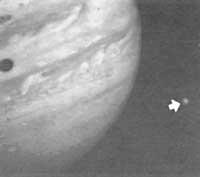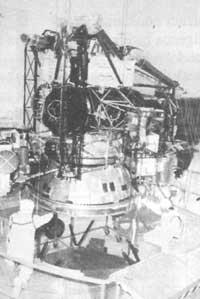Galileo, space t-shirt
1990/01/01 Irazabalbeitia, Inaki - kimikaria eta zientzia-dibulgatzaileaElhuyar Fundazioa | Barandiaran, Mariaje Iturria: Elhuyar aldizkaria
The Space Shuttle Atlantis took him inside to an orbit of 300 kilometers from Galileo Earth. The astronauts released the probe and removed the ferry from the probe at a safe distance. Galileo's solid fuel engines were then switched on and the first step of the long and complex journey to Jupiter was successfully completed. The journey is very complicated and the nuclei of celestial mechanics have been squeezed to the shredding to find an exact and economic route to Jupiter.
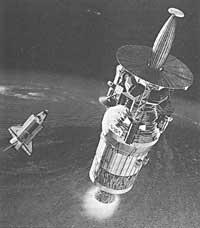
Galileo, after leaving Atlantisa and our planet, heads towards Venus, the road against that of Jupiter. By February 9 it will cross the orbit of Venus at 19,000 kilometers from the planet. Taking advantage of the magnetic field of Venus will increase the speed and move towards the orbit of the Earth. It will reach us around December 8 and will pass 3,600 km from the blue planet. The gravitational impulse of the Earth will revolve around the Sun to the asteroid belt following an eccentric orbit. He will return from the asteroid belt to Earth, passing this time to only 300 km (December 8, 1992). After the second part, he will have enough strength to reach Jupiter and will head there to arrive in early December 1995.
On all obstaclesThe Galileo mission has had to overcome from the beginning numerous obstacles and obstacles and the incidents and problems have lasted until the day of launch. The execution of the Galileo project has been questioned four times and has also undergone seven important changes in its design.
Galileo's development was decided in 1977. The initial release date was 1982. The technical problems, the budgetary constraint and the Challenge accident (in the Galileo orbit this ferry was going to put) are responsible for the delay.
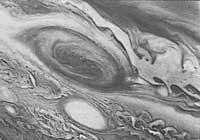
In addition, at the last moment there has also been a bitter controversy over Galileo. The possibility of not throwing has been in the hands of Florida judges. Reason: complaint filed by several ecologists through the radioactive energy source of the probe
two main parts: on the one hand until its arrival at Jupiter and on the other hand to perform on the giant planet. In addition, upon reaching the jobiar system, Galileo will be divided into two. A part, acting in the form of kamikaze, penetrates the atmosphere of Jupiter and explores it until it deteriorates due to the enormous pressures of gases. The other part is located in the orbit of the planet and studies this and its four Galilean satellites (Io, Europa, Ganimide and Calisto).
During the journey, Galileo will explore the stars you will find and space. It will collect data to help understand the thermodynamics of the high atmosphere of the planet as it passes through the environment of Venus and analyze the distribution of water vapor in the atmosphere of Venus.
As you pass through the asteroid belt you will have the opportunity to closely investigate two, Gaspra and Ida.
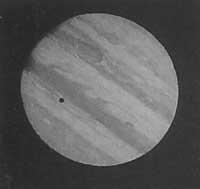
Interspatially it will measure the flow of hydrogen and the mass, speed and density of dust, among others.
In the bowels of the giantThe “in situ” study of Jupiter’s atmosphere is without lips the most striking part of this mission. Five months before Galileo reaches Jupiter, he will cast a rattle to the planet that will follow a ballistic path. The speed of the rattle when reaching the high atmosphere of Jupiter is 48 km/s. The pressure will be 0.0001 bars, the tenth of the land surface. Atmospheric friction will slow the speed of the probe until sound starts. The existing thermal protections will be released and the parachute will be opened. It will be located at the top of the clouds and the pressure will be 0.08 bars.
For three or three minutes the probe will descend through the layers of clouds. It descends between 130 and 150 km. Then the pressure will be very high, about 25 bars and the probe will deteriorate forever. In the meantime, it will send the received data to the part surrounding the planet and it will send it back to Earth.
The T-shirt probe is expected to cross three layers of clouds. The first layer consists of ammonia, the second of ammonium hydrogen and the third of water.
Around the giant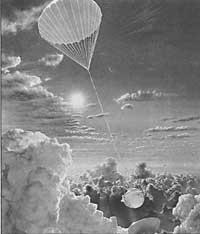
The other part of Galileo begins to orbit when it reaches Jupiter. One of the objectives of this part is to study the morphology, physical state and movement of four Galilean satellites. It should be noted that it will approach more than the Voyager and Pioneer probes and that taking into account its experience carries the specially designed equipment. Therefore, very interesting data is expected.
On the other hand, it is also a study of the violent magnetic field of Jupiter. The giant's magnetic field is the largest of our planetary system after the Sun. Jupiter's magnetosphere, a product of the magnetic field, has a teardrop shape and its radius is 50 times greater than that of Jupiter. The magnetic field is because condensed hydrogen in the Jupiter area has acquired a metal structure.
The Galileo mission has only begun. It is six long years ahead before reaching its spring. We will have the opportunity to talk more about it and time.
Radioisotope generators
At 817.1 million km from the Sun, in the orbit of Jupiter, Galileo will not use solar panels for energy. For the energy supply you will use two generators that use radioisotopes.
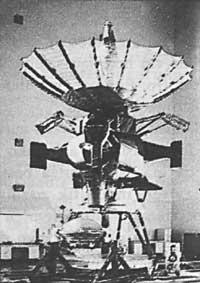
There was the possibility of using solar panels, but needing 200 m2, 500 kg more, they were discarded. The designers therefore invented two generators that use plutonium oxide tablets 238 (IV) as fuel. The entire system weighs only 22 kg.
This is not the first time radioisotopes are used in space. NASA, for example, used them in the ALSEP toolkits it planted on the Moon and the Soviets have frequently used radioactive generators. It is estimated that the Soviets have already installed 1,880 kg of radioactive fuel in space.
The fear of American ecologists was the explosion during the launch and dispersion of plutonium on the earth's surface. Keep in mind that plutonium is very radioactive and also poisonous.
However, NASA has taken special measures to prevent the spread of plutonium in the event of an accident. Plutonium is not powdered, but wrapped in ceramic tablets. In case of an explosion, it can hardly become dust or respirable gas.
Galilean satellites
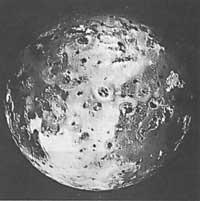
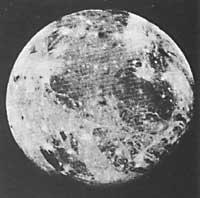
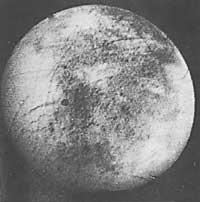
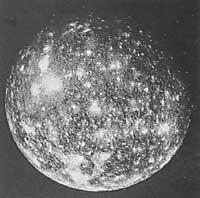
Jupiter's four largest satellites are called the Galilean satellite in honor of its discoverer, Galileo. In total there are four: Io, Europa, Ganimide and Calisto.
Calisto
Its surface is full of impact craters and there are no soft regions like the Moon's marias. Therefore, it does not seem to have had internal activity. Its radius is 2,410 km.
Ganimide-
It resembles the Moon more, as regions with impact craters and softer regions appear mixed. In softer regions there are lots of cracks. Its radius is 2,638 km.
Europe
Its surface has nothing to do with that of others. There is hardly any impact crater and it is covered with ice. The number of impact craters is similar to that of the continental terrestrial zone, so the European surface can be considered very young. Europe can be given softness by the water that leads to the interior. Its radius is 1,563 km.
Io
Io is a satellite in constant activity. There are amazing volcanoes working. When Voyagera passed in 1979 there were 10 volcanoes working on fire and flame. Tectonic activity as ion is unparalleled in our system. Its radius is 1,816 km.

Gai honi buruzko eduki gehiago
Elhuyarrek garatutako teknologia




